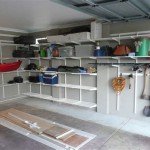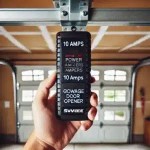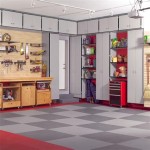Setting Up a Home Gym In The Garage
The concept of a home gym has become increasingly appealing for individuals seeking convenient and personalized fitness solutions. A garage offers a dedicated space, often underutilized, that can be transformed into a functional and effective workout area. This article details the key considerations and steps involved in setting up a home gym in a garage, ensuring a safe, efficient, and motivating training environment.
Garage spaces, while offering potential, often require significant preparation to become suitable for exercise. Considerations range from addressing environmental factors to proper flooring and equipment selection. Strategic planning is crucial for maximizing space and creating a gym that aligns with individual fitness goals.
Assessing the Garage Space and Prepping
Before acquiring any equipment, a thorough assessment of the garage space is paramount. This involves measuring the dimensions of the garage to determine the usable area for equipment placement and movement. Height clearance is especially important for exercises like overhead presses or pull-ups. A low ceiling may necessitate adjustments to exercise choices or equipment modifications.
Garages are often subject to temperature fluctuations and moisture. Insulation can regulate temperature, making the space usable year-round. Proper ventilation, such as a fan or open window, is essential to prevent the buildup of moisture and odors, particularly during intense workouts. Addressing these environmental factors contributes to a more comfortable and safer workout environment.
Flooring is another critical aspect. Concrete floors, common in garages, are hard and unforgiving, potentially leading to injuries during impact exercises. Options include rubber flooring, interlocking foam tiles, or even rolled rubber. Rubber flooring offers cushioning, absorbs impact, and is relatively easy to clean. The chosen flooring should be durable, easy to maintain, and suitable for the types of exercises planned.
Lighting in garages is often inadequate. Upgrading the lighting with brighter LED fixtures can significantly improve visibility and create a more motivating atmosphere. Consider adding multiple light sources to eliminate shadows and ensure adequate illumination throughout the space. Proper lighting enhances safety and allows for better monitoring of form during exercises.
Finally, address any structural issues. Inspect the walls and ceiling for cracks or damage. Repair any significant problems before proceeding with gym setup. Consider painting the walls with a light color to brighten the space and make it more inviting. A clean and well-maintained garage environment will enhance the overall workout experience.
Selecting Essential Equipment for a Garage Gym
The selection of equipment should align with individual fitness goals, budget, and available space. There is no one-size-fits-all approach; selecting equipment that maximizes usability and versatility is key.
For strength training, a power rack or squat stand is a valuable addition. It provides a safe environment for performing squats, bench presses, and overhead presses. A weight bench is also essential for various exercises. Consider an adjustable bench to allow for incline and decline positions.
Free weights, such as dumbbells and barbells, are versatile and effective for building strength and muscle mass. A set of adjustable dumbbells can save space and offer a range of weight options. A barbell and weight plates are fundamental for compound exercises.
Cardiovascular exercise is also important for overall fitness. Options include a treadmill, elliptical, stationary bike, or rowing machine. The choice depends on personal preference and available space. Consider folding treadmills or bikes to conserve space when not in use. Jump ropes are a relatively inexpensive and space-saving alternative for cardio workouts.
For bodyweight exercises, a pull-up bar is a valuable addition. It can be mounted on the wall or ceiling. Resistance bands offer another versatile option for bodyweight training. They are compact, portable, and can be used for a wide range of exercises.
Storage solutions are crucial for keeping the garage gym organized and safe. Weight plate racks, dumbbell racks, and barbell storage systems help keep the equipment off the floor and prevent tripping hazards. A storage cabinet or shelving unit can hold smaller items like resistance bands, jump ropes, and foam rollers.
Mirrors are a valuable addition for monitoring form and technique. Install mirrors on the walls to provide visual feedback during exercises. This can help prevent injuries and ensure proper execution. Safety is paramount; adequate space around equipment is crucial to prevent collisions and ensure freedom of movement.
Organizing and Optimizing the Garage Gym Space
Effective organization is the key to maximizing the functionality and usability of the garage gym. A well-organized space promotes a safe and efficient workout environment.
Start by creating zones for different types of exercises. Designate one area for strength training, another for cardio, and another for stretching and mobility work. This helps delineate the space and prevents equipment from overlapping.
Position the power rack or squat stand against a wall to maximize space. Ensure there is enough clearance around the rack for performing various exercises. Place the weight bench near the rack for easy access during bench presses and other exercises.
Arrange free weights in an organized manner. Use weight plate racks and dumbbell racks to keep the equipment off the floor and prevent tripping hazards. Store barbells vertically in a barbell storage system.
Place cardio equipment in a location that minimizes obstruction. Consider placing cardio equipment near a window or television to provide a distraction during workouts. Ensure there is adequate ventilation in the cardio area.
Create a dedicated stretching and mobility area. This area should be free of equipment and have ample space for performing stretches and mobility exercises. A yoga mat or foam roller can be used in this area.
Utilize vertical space to maximize storage. Install shelving units or cabinets to store smaller items like resistance bands, jump ropes, and foam rollers. Hang resistance bands on hooks on the wall to keep them organized and accessible.
Consider adding a whiteboard or corkboard to track workouts and progress. This can help stay motivated and organized. A sound system can also enhance the workout experience. Consider installing speakers or using wireless headphones.
Maintaining a clean and organized gym is crucial for safety and motivation. Wipe down equipment after each use to prevent the buildup of sweat and dirt. Sweep or vacuum the floor regularly to keep the space clean and free of debris. A clean and well-maintained gym will promote a positive workout experience.
Beyond just the equipment, other considerations include access to power outlets for electronic equipment and a reliable Wi-Fi connection if streaming workout videos or music. Plan the layout with these elements in mind to avoid tripping hazards or inconvenient access points.
Setting up a home gym in the garage requires careful planning and execution. By assessing the space, selecting essential equipment, and organizing the layout effectively, one can create a functional and motivating workout environment that supports individual fitness goals. Prioritizing safety, maximizing space, and maintaining a clean and organized gym will contribute to a long-term and rewarding fitness journey.

Home Garage Gym Ideas For Set Up

Creating A Home Gym In Your Garage Premiergarage

Home Gym In The Garage Bunnings Work Community

Garage Gym Ideas Kian S 7 200 Home Setup

All In One Garage Gym Complete Home Set Up Full Trainer Max Bh

I Built My Dream Garage Home Gym

Why You Should Create A Home Gym

From Crossfit To Home Gym Tyler S 11 000 Garage Setup

Home Gym In The Garage Bunnings Work Community

How To Create A Home Gym In Your Garage Pinnacle Hardware
Related Posts








